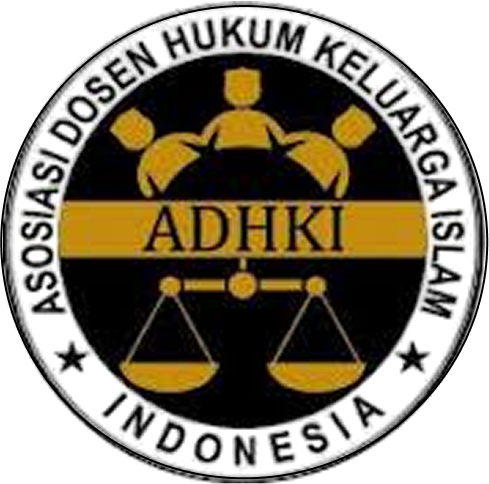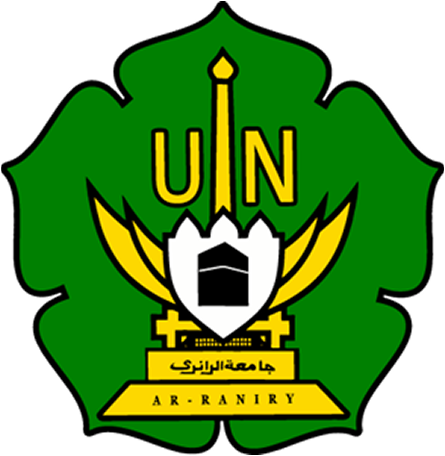Normativism of Islamic Law in the Akkattere Hajj Ritual of South Sulawesi’s Ammatoa Community
DOI:
https://doi.org/10.22373/sjhk.v7i1.15987Keywords:
Normativism of Islamic law, akkattere ritual, hajj, Ammatoa community, South SulawesiAbstract
The profound impact of cultural and religious modernity on various aspects of life has brought about significant changes in regional akkattere traditions in Ammatoa society. According to this hadith, the pilgrimage which is in harmony, the conditions and obligations are in accordance with Islamic law, and which must be performed at a certain time and place, can be completed easily through the akkattere ritual. This research is an empirical law using an anthropological approach to Islamic law. The purpose of this study is to examine the incorporation of customary values and Islamic law in the Akkattere tradition of the Ammatoa community in the region, and to evaluate its impact. Data was collected using interviews and literature studies. The research was conducted in Tanah Towa Village in Kajang District, Bulukumba Regency, South Sulawesi Province. The research concluded that the akkatere ritual obviated the need to wait in long lines or have the financial resources to perform the pilgrimage to the holy land of Mecca. Based on the findings of this study, anthropologically the akkattere traditional law is the result of a dialectic between Islam and local traditions and has resulted in new local pilgrimage practices, which is now a religious characteristic of the Ammatoa people. Nonetheless, the understanding of Hajj by the Ammatoa community has deviated substantially from the normatism of Islamic law, so that it fundamentally influences aspects of religious belief and ideology.References
Journals and Books
Abdullah, Irwan. “Communalism Shattered: Thirty Years of Conflict Experiences in the Province of Aceh, Indonesia.” Anthropological Notebooks 24, no. 1 (2018).
Al-Menayes, Jamal. “Measuring the Spiritual and Behavioral Dimensions of Religiosity in a Muslim Sample.” Asian Social Science 12, no. 2 (2016). https://doi.org/10.5539/ass.v12n2p158.
Ardiyanto. “Tradisi Akkattere Di Desa Tanah Towa, Kecamatan Kajang, Kabupaten Bulukumba (Tinjauan Aqidah Islam).” UIN Alauddin Makassar, 2017.
Arifin, M, et.al., “Contestation between Puritan Islam and Kejawen in the Urban Yogyakarta of Indonesia.” Al-Albab 8, no. 2 (2019). https://doi.org/10.24260/Alalbab.V8I2.1460.
Batara, Sri, et.al., “Pola Ruang Permukiman Berdasarkan Kearifan Lokal Kawasan Adat Ammatoa Kecamatan Kajang Kabupaten Bulukumba (Settlement Space Pattern Based on Local Wisdom Ammatoa Traditional Areakajang District Bulukumba Regency).” Teknik PWK 2 (2018).
Berghammer, Caroline, and Katrin Fliegenschnee. “Developing a Concept of Muslim Religiosity: An Analysis of Everyday Lived Religion among Female Migrants in Austria.” Journal of Contemporary Religion 29, no. 1 (2014). https://doi.org/10.1080/13537903.2014.864810.
Clark, Jessie Hanna. “The ‘Life’ of the State: Social Reproduction and Geopolitics in Turkey’s Kurdish Question.” Annals of the American Association of Geographers 106, no. 5 (2016). https://doi.org/10.1080/24694452.2016.1187061.
Cohen, A. P, and A. P. Wolf. “Religion and Ritual in Chinese Society.” Journal of the American Oriental Society 98, no. 4 (1978). https://doi.org/10.2307/599787.
Cottle, S. “Mediatized Rituals: Beyond Manufacturing Consent.” Media, Culture and Society 28, no. 3 (2006). https://doi.org/10.1177/0163443706062910.
Dalziel, Paul, Caroline Saunders, Catherine Savage, and Authors Paul Dalziel Caroline Saunders Catherine Savage. “Culture, Wellbeing, and the Living Standards Framework: A Perspective,” 2019. https://www.treasury.govt.nz/publications/dp/dp-19-02.
Farid, Shahzad, and Saif-Ur-Rehman Saif Abbasi. “Structure of Punjab and Social Reproduction: Role of Capital.” Pakistan Journal of Social Sciences 39, no. 4 (2019). http://pjss.bzu.edu.pk/index.php/pjss/article/view/806.
Gazniuk, Lidiia, Irina Soina, Gennadiy Goncharov, and Pavel Chervony. “Everyday Communications in Religious Practices.” In SHS Web of Conferences, 72(02002), 2019. https://doi.org/10.1051/shsconf/20197202002.
Gluckman, Max, and D. J. Parkin. “Politics, Law and Ritual in Tribal Society.” Man 1, no. 3 (1966). https://doi.org/10.2307/2796816.
Gore, Ellie, and Genevieve LeBaron. “Using Social Reproduction Theory to Understand Unfree Labour.” Capital and Class 43, no. 4 (2019). https://doi.org/10.1177/0309816819880787.
Hijang, P. “Pasang Dan Kepemimpinan Ammatoa: Memahami Kembali Sistem Kepemimpinan Tradisional Masyarakat Adat Dalam Pengelolaan Sumberdaya Hutan Di Kajang Sulawesi Selatan.” Antropologi Indonesia 29, no. 03 (2005). https://doi.org/10.7454/ai.v29i3.3545.
Jumiati, J. “Transformasi Upacara Belian Ke Dalam Tari Gitang Paser.” Joged: Jurnal Seni Tari 10, no. 2 (2017). https://doi.org/10.24821/joged.v10i2.1888.
Kertzer, David I, and Francis B. Nyamnjoh. “Ritual, Politics, and Power.” Political Psychology 10, no. 4 (1989). https://doi.org/10.2307/3791340.
Kivisto, Peter. “Religion: What It Is, How It Works, and Why It Matters.” Journal of Contemporary Religion 33, no. 3 (2018). https://doi.org/10.1080/13537903.2018.1535299.
Kuenna. “Simbol Dalam Upacara Adat Dayak Ngaju (Symbols in Ritual Tribe of Dayak Ngaju).” Jurnal Bahasa, Satra, Dan Pembelajarannya 5, no. 2 (2015). https://doi.org/10.20527/jbsp.v5i2.3724.
Lane, William A., and Kristie L. Seelman. “The Apparatus of Social Reproduction: Uncovering the Work Functions of Transgender Women.” Affilia - Journal of Women and Social Work 33, no. 2 (2018). https://doi.org/10.1177/0886109917747614.
Lucero, Lisa J. “The Politics of Ritual: The Emergence of Classic Maya Rulers.” Current Anthropology 44, no. 4 (2003). https://doi.org/10.1086/375870.
Lukes, Steven. “Political Ritual and Social Integration.” Sociology 9, no. 2 (1975). https://doi.org/10.1177/003803857500900205.
Manik, H. S. “Makna Dan Fungsi Tradisi Sinamot Dalam Adat Perkawinan Sukubangsa Batak Toba Di Perantauan Surabaya.” BioKultur 1, no. 1 (2012).
Martí, Gerardo. “New Concepts for New Dynamics: Generating Theory for the Study of Religious Innovation and Social Change.” Journal for the Scientific Study of Religion 56, no. 1 (2017). https://doi.org/10.1111/jssr.12325.
Muhaimin, Metodologi Penelitian Hukum, Mataram: Mataram Universiti Press, 2020.
Murphy, James. “Beyond ‘Religion’ and ‘Spirituality’: Extending a ‘Meaning Systems.’” Archive for the Psychology of Religion 39, no. 1 (2017). https://doi.org/10.1163/15736121-12341335.
Oostveen, Daan F. “Religious Belonging in the East Asian Context: An Exploration of Rhizomatic Belonging.” Religions 10, no. 3 (2019). https://doi.org/10.3390/rel10030182.
Pamungkas, Senopati. “Tradisi Ritual Tingkepan Dalam Perspektif Aqidah Islam.” Kompasiana, 2019. https://www.kompasiana.com/senopatipamungkas99/5d19bff30d823040286b0422/tradisi-ritual-tingkepan-dalam-perspektif-aqidah-islam.
Ritter, Christian S, and Vladimir Kmec. “Religious Practices and Networks of Belonging in an Immigrant Congregation: The German-Speaking Lutheran Congregation in Dublin.” Journal of Contemporary Religion 32, no. 2 (2017). https://doi.org/10.1080/13537903.2017.1298907.
Santosa, Puji. “Fungsi Sosial Kemasyarakatan Tembang Macapat.” Widyaparwa: Jurnal Ilmiah Kebahasaan Dan Kesastraan 44, no. 2 (2016): 85–97. https://doi.org/10.26499/wdprw.v44i2.131.
Sodiqin, Ali, "Antrolopogi Hukum sebagai Pendekatan dalam Penelitian Hukum Islam," Manahij: Jurnal Kajian Hukum Islam 7, No. 1 (2013). Doi.org/10.24090/mnh.v7i1.581.
Sriwulan, Wilma, Timbul Haryono, Victor Ganap, and G.R. Lono L. Simatupang. “Struktur, Fungsi, Dan Makna Talempong Bundo Dalam Upacara Maanta Padi Saratuih.” Resital: Jurnal Seni Pertunjukan 15, no. 1 (2014):. https://doi.org/10.24821/resital.v15i1.800.
Syamsurijal. “Islam Patuntung: Temu-Tengkar Islam Dan Tradisi Lokal Di Tanah Toa Kajang.” Al-Qalam 20, no. 2 (2016). https://doi.org/10.31969/alq.v20i2.197.
Tremlett, Paul-François. “Religion, Marxism, and Ideology.” The International Encyclopedia of Anthropology, September 5, 2018, 1–7. https://doi.org/10.1002/9781118924396.WBIEA1802.
Turner, V. “Liminal to Liminoid, in Play, Flow, and Ritual: An Essay in Comparative Symbology. Rice University Studies.” Rice Institute Pamphlet-Rice University Studies 60, no. 3 (1982), p. 53–92. https://hdl.handle.net/1911/63159.
Turner, V. The Anthropology of Performance. New York: PAJ Publications, 1986.
Turner, V, R Abrahams, and A Harris. The Ritual Process: Structure an Antistructure. London: Routledge, 1969.
Interviews
Interview with Abdul Salam, the Village Head of Tanah Toa, 2022.
Interview with Amir Bolong, Ammatoa Customary Leader, 2022.
Interview with Bahar, Head of Bongkina Hamlet and Ammatoa Traditional Leader, 2022.
Interview with Galla Lombo, Customary Leader Who Manages Internal Ammatoa, 2022.
Interview with Kahar Muslim, a Former Head of Tanah Toa Village and Leader of the Ammatoa Indigenous Community, 2022.
Interview with Lallo, Head of Sobbu Hamlet, 2022.
Interview with Puto Ganing, Kajang’s Traditional Community Leader, 2022.
Interview with Puto Hading, Ammatoa Customary Leader, 2022.
Interview with Puto Jumalang, Leader in the Ammatoa Customary Tradition,” 2022.
Interview with Puto Palasa, a Bohe Amma or Ammatoa, 2022.
Interview with Toba, Leader in the Ammatoa Customary Tradition, 2022.
Downloads
Published
Issue
Section
License
Authors who publish in Samarah: Jurnal Hukum Keluarga dan Hukum Islam agree to the following terms:
- Authors retain copyright and grant the journal right of first publication with the work simultaneously licensed Attribution-ShareAlike 4.0 International (CC BY-SA 4.0) that allows others to share the work with an acknowledgment of the work's authorship and initial publication in this journal.
- Authors are able to enter into separate, additional contractual arrangements for the non-exclusive distribution of the journal's published version of the work (e.g., post it to an institutional repository or publish it in a book), with an acknowledgment of its initial publication in this journal.
- Authors are permitted and encouraged to post their work online (e.g., in institutional repositories or on their website) prior to and during the submission process, as it can lead to productive exchanges, as well as earlier and greater citation of published work. (See The Effect of Open Acces)









